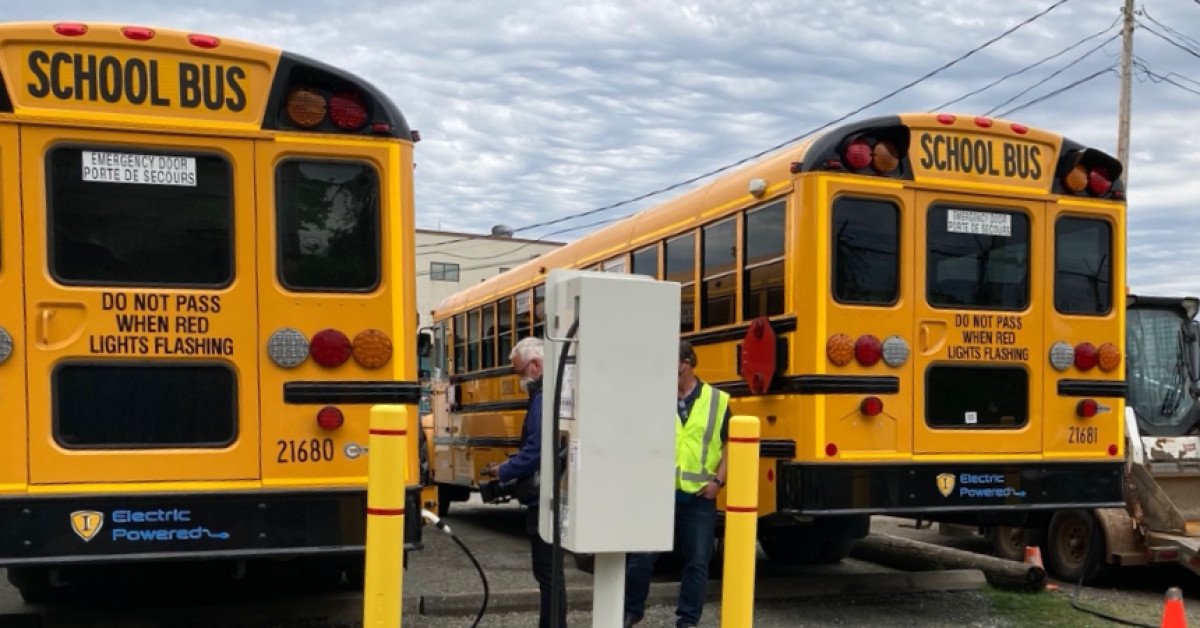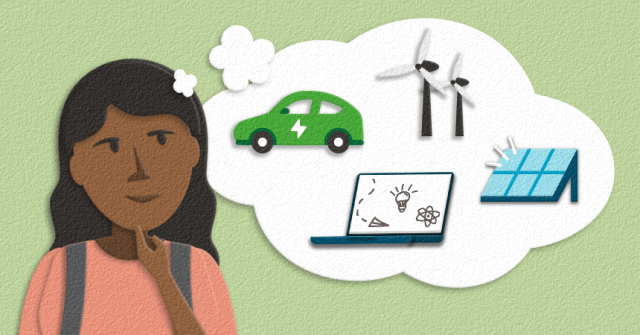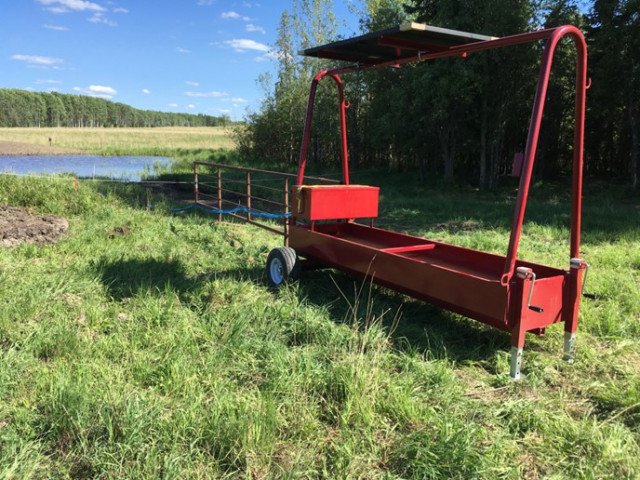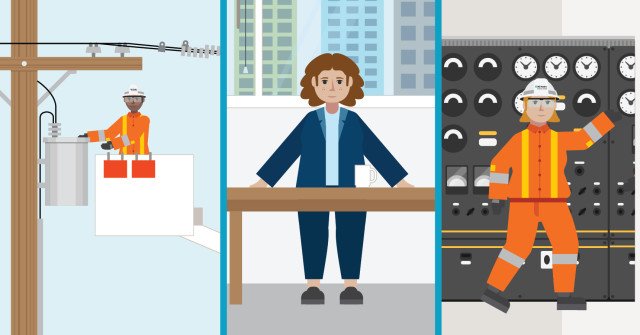In B.C., we’re lucky to be able to enjoy clean electricity. BC Hydro harnesses the power of moving and falling water to produce enough electricity for the entire province. So wherever possible, we should all try to switch from other types of non-renewable energy or fuel—it’s called electrification.
One of the most obvious ways to do this is to switch to electric vehicles (EVs).
Currently, there are over 54,000 EV cars and trucks registered in B.C. and the province is well on the way to exceeding its 2025 targets: 9.4% of all new B.C. light-duty vehicle sales were EVs in 2020.
But there are also some other exciting new EVs starting to appear in B.C.—electric school buses.
From the outside, they look just like any other diesel-powered school bus. But don’t be fooled—there are some BIG differences between them both.
Electric school bus facts and figures
Let’s take a look at some of the impressive numbers.
A zero-emission electric school bus:
- Saves about 17 tonnes of greenhouse gas emissions every year compared to a diesel school bus.
- Has around just 10% of the moving parts that you’ll find on a diesel school bus - so they’re less likely to break down and maintenance is much cheaper and easier.
- Costs over twice as much as a diesel school bus and has a 12-year lifespan just like a diesel, BUT… unlike a diesel, during the last five years of an electric school bus's life, that upfront investment starts to pay off and it can save the school district $20-30k a year in fuel and maintenance.
Electric school buses are also very quiet on the inside, making it much easier for students to talk, read or listen to music. Plus, it’s much easier for drivers to listen out for any problems.
And there’s another interesting trick that electric buses have up their sleeves: schools should soon be able use their batteries as a secondary energy source during a power outage or an emergency situation. “It’s early days,” says Aron Garrecht, a Key Account Manager at BC Hydro. “But we’re busy evaluating it, and in the next few years, there should be software that can help us to facilitate that.”
The BC Ministry of Education funded 13 School Districts to purchase a total of 18 electric school buses which are in service for K-12 students this school year. Here’s where you can look out for them:
| 1 electric school bus | SD 5 - Southeast Kootenay SD 6 - Rocky Mountain SD 20 - Kootenay-Columbia SD 67 - Okanagan Skaha SD 69 - Qualicum SD 73 - Kamloops-Thompson SD 79 - Cowichan Valley SD 84 - Vancouver Island West SD 85 - Vancouver Island North |
| 2 electric school buses | SD 22 - Vernon SD 62 - Sooke SD 68 - Nanaimo Ladysmith |
| 3 electric school buses | SD 23 - Central Okanagan |
Funding for electric school buses is part of an ongoing program, so you can look forward to seeing even more electric school buses on the road in the future.
What are electric school buses like in the real world?
Electric school buses promise some incredible benefits. But what’s it like to actually run them every day? We spoke to Pete Godau, Director of Facilities at School District 62 in Sooke, and Mary Zuccaro, Energy Manager with School District 68 in Nanaimo.
“We have two buses, and our drivers love them,” says Pete. “They had a raffle to decide who would get to drive them! They’re working fine, doing two routes in the morning and two in the afternoon. That’s up to two hours at a time.”
Electric school buses aren’t necessarily right for every route, though. “Some routes don’t make sense,” says Pete. “For instance, our Port Renfrew routes are too long. It depends on how rural you are—I would say it’s best to focus on shorter routes that carry a lot of students. And don’t forget about charging stations. You’ll need to have enough space and a suitable electrical infrastructure.”
Mary had this to say about her experience with BC Hydro during her electrical service upgrade in Nanaimo: “The infrastructure upgrade required to accommodate installation of our chargers (new transformer and pole) did not cost anything because BC Hydro issues credits, depending on if your anticipated load is on peak or off peak, for every kW of estimated added load. Our overall service upgrade costs were very close to our credit value so we paid next to nothing for our service upgrade. This may not be the same for every EV customer, but the stars aligned very well for us."
Both Pete and Mary had another reason for introducing electric school buses. Like many School Districts, theirs have both set ambitious energy and sustainability plans. “We’ll make some financial savings,” says Pete. “But for our strategic direction moving forward, it’s all about reducing our carbon footprint.”
Mary believes electric school buses are a great way to show teachers, parents and students that the School District is serious about sustainability: “Our Board of Trustees have asked us to reduce our carbon footprint by 4.5% every year. That’s a tough target and we have to find smart ways to get there. Electric school buses are a great conversation starter.”
"Moving forward, it’s all about reducing our carbon footprint." - Pete Godau
Educational resources on sustainable transportation
You can get your class talking about ways to reduce carbon emissions and learn about electrification with these Power Smart for Schools activities:
How far can you go? (Grade 6-8)
Students plan a virtual road trip across B.C. in an electric vehicle. To succeed, they need to consider factors like different vehicles’ varying ranges of distance, charger locations, how long it takes to charge, and how long the overall trip will take.
Inside an EV (Grade 6-8)
With the help of an instructional presentation, a video, and a handout, students look at the difference between the parts in a gas-powered car and an EV to see how they both work before considering what it’s like to own and drive an EV.
Innovation in transportation (Grade 7)
Walk your class through our presentation about transportation technologies that reduce greenhouse gas emissions. A worksheet then looks at the future of transportation and its impact on climate change.
Choose an EV (Grade 10-12)
Brainstorm with your class about all the factors go into choosing an EV. Students then complete a worksheet and share with a partner to discuss which EV they would buy and why.
EV truths and myths (Grade 10-12)
Explore what’s true and what’s false about EVs, leading students in a discussion about sustainable transportation solutions. Students can then break into groups to research and compare EVs from different car manufacturers.
Researching the environmental effects of vehicles (Grade 11)
Students use criteria to generate and refine effective hypothesis and inquiry questions that help to determine which type of vehicle is better for the environment.
These are just a few of our many teaching resources. Discover dozens more Sustainability activities for students of all ages and visit our Conservation hub for extra ideas and inspiration about smart energy use.






